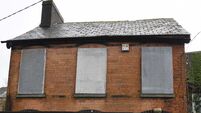House buyers risk return to commuter belt: ESRI

The analysis by the Economic and Social Research Institute says too few houses are being built in the areas of highest demand despite the lure of high prices.
Cork, Dublin and Galway in particular have seen house prices jump more than 30% since the start of 2013, but the prices still aren’t attractive enough on their own to kick-start substantial levels of construction in these key areas of demand.
Edgar Morgenroth, ESRI associate research professor, said the only option for many home seekers was to start looking well beyond those locations. “The data shows that purchasing patterns similar to those seen during the boom years may re-emerge if affordable housing is more readily available outside Dublin and the other areas of high demand, resulting in unsustainable long-distance commutes for house buyers,” he said.
The county-by-county analysis, which is being published in full today, finds that while house building has increased since the start of 2013, 60% of the new homes are in areas outside the major urban centres where there is most demand.
It says a greater share of completions is now accounted for by one-off houses while the number of apartment complexes has declined. “The number of planning permissions for multi-unit developments is also at a low level, indicating that completions of this type of development will not increase significantly in the near future.”
Normally, the prospect of being able to charge premium prices would push developers into action. Prices rose more than 30% in Cork, Galway and Dublin cities and in the Dublin commuter counties and more than 50% in South Dublin.
But while supply has risen in response to prices across the country generally, high building costs, a shortage of development land and problems getting credit are believed to be preventing developers in the major urban centres meeting demand there.
The analysis suggests the housing crisis will not be easily solved, with the further expansion of commuter belts poorly served by local amenities the likely outcome based on current trends.
The ESRI study comes just days after it published estimates that 26,000 family sized homes could be freed up if empty nesters were given incentives to downsize.
The idea was criticised as placing the burden of solving the housing crisis on older people but supporters said it was vital to start a discussion on how the best use could be made of the existing housing stock when so many barriers were working against getting new stock built where it was most needed.












